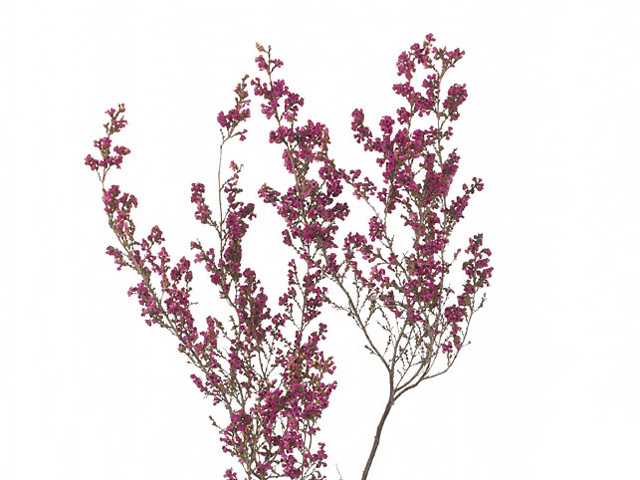Erica bicolor

| Flower color | Purple-dark purple-064A |
| Flower diameter | Small; 1 - 10 mm |
| soil pH requirement | Acid (pH < 4,5); Slightly acidic (pH 4,5 - 6,5) |
| Light conditions | Sunny |
| Moisture requirements | Well-drained |
| Soil type | Sandy; Peaty |
Erica bicolor, commonly known as Heather, Heath, or Bell Heather, is a beautiful flowering plant that adds a touch of purple to any garden. This charming plant showcases a range of purple to dark purple flowers, making it an eye-catching addition to any landscape.
One notable feature of Erica bicolor is its small flower diameter, ranging from 1 to 10 millimeters. Despite their small size, these vibrant flowers make a big impact when clustered together, creating a striking display of color.
When it comes to soil pH requirements, Erica bicolor thrives in acidic soil conditions with a pH level below 4.5. However, it can also tolerate slightly acidic soil with a pH range of 4.5 to 6.5. This makes it a versatile choice for gardeners who might have varying soil conditions in their landscape.
Light conditions are an important consideration for the growth of Erica bicolor. This plant thrives in sunny areas where it can receive ample sunlight throughout the day. Placing it in a location that receives full sun will ensure optimal growth and flowering.
Moisture requirements for Erica bicolor are relatively low-maintenance. The plant prefers well-drained soil to prevent waterlogging, which can lead to root rot. However, it is important to note that Erica bicolor does not tolerate drought well and requires regular watering to keep the soil moist but not overly saturated.
In terms of soil type, Erica bicolor prefers sandy or peaty soil. These soil types provide the right texture and drainage conditions for the plant to grow and flourish. Sandy soil allows excess water to drain away quickly, preventing waterlogging, while peaty soil retains moisture without becoming waterlogged.
Overall, Erica bicolor is a beautiful flowering plant that can add a touch of purple to any garden. Its small yet vibrant flowers, coupled with its preference for acidic soil, sunny locations, and well-drained, sandy or peaty soil make it a versatile choice for both experienced gardeners and beginners. Consider adding Erica bicolor to your landscape for a pop of color and a touch of elegance.
Market availability index by month:
| Jan. | Feb. | Mar. | Apr. | May | Jun. | Jul. | Aug. | Sep. | Oct. | Nov. | Dec. |
|---|---|---|---|---|---|---|---|---|---|---|---|
| - | 2 | 4 | 2 | 3 | 2 | 3 | 3 | 4 | 3 | - | 1 |